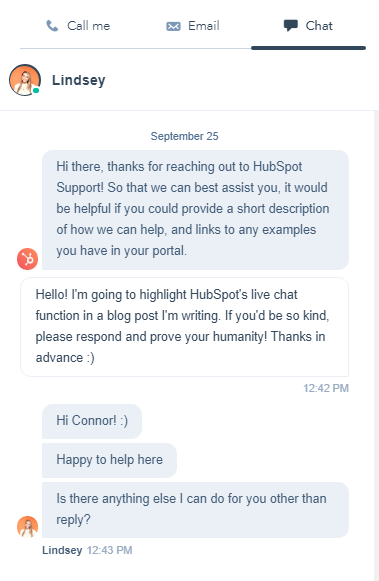

The word is officially out: ecommerce is no longer exclusive to Direct-to-Consumer businesses. In fact, B2B companies have an opportunity to cash in on a much larger piece of the pie. A trillion-dollar pie.
With Amazon dominating the online shopping space and more Millenials finding themselves in managerial and executive positions, the expectation of a B2C-style buying experience in traditional B2B industries is quickly becoming the norm. And, with Forrester Research predicting B2B ecommerce to reach $1.8 trillion in the US by 2023 (retail ecommerce reached $453 billion in 2017), the time to modernize your B2B business with ecommerce functionality is right now.
Here are four of our top B2B ecommerce solutions that you should consider when building up your ecommerce strategy.
1. Customize your site around the user experience
The demographic of B2B buyers is trending toward a younger average — and younger buyers expect a smooth and seamless digital path to purchase, no matter where they're shopping online. If you're going to build ecommerce functionality into your business, you have to make sure your website is optimized for user experience (UX). Make it easy for your site visitors to find what they're looking for and to educate themselves on your products or services.
Account & Catalog Management
In a report produced by BigCommerce and a number of other B2B solution providers, the authors highlight efficient account and catalog management as two of the most important factors in B2B ecommerce. Make it as convenient as possible for a customer to set up a corporate account and enter themselves into a buying workflow that's customized to their specific needs. That means setting up multiple product catalogs and pricing tiers that you offer to your customers depending on the type of account they set up.
"You may have B2B customers that don’t need access to the entire catalog or have special negotiated pricing with you on certain products," the article notes. " Assigning customer catalogs to specific customer segments is a way for you to start to personalize the B2B customer shopping experience for your users."
Although sales calls and emails aren't going away anytime soon, offering your customers an easy way to set up an account and access the custom catalogs and pricing they need is crucial to modernizing your traditional sales process. As the article points out, "it’s all about maximizing the potential of your online channels just as much as your offline channels."
Site Search and Navigation
If a B2B buyer can't find what he's looking for, or can't easily browse your offerings, you might lose him as a customer before he even starts his research. Your site starts at the top of your Home Page, so your navigation and search functionality need to be self-explanatory and user-friendly, especially if you have a complicated product catalog.
You don't have to look far for good examples of optimized site search and header navigation on a B2B ecommerce site. Alibaba, the world's leading marketplace in this category, keeps it simple:
 At its core, Alibaba's header navigation offers visitors three valuable options:
At its core, Alibaba's header navigation offers visitors three valuable options:
- The Categories drop-down, which clearly organizes products into categories, subcategories, and even sub-sub-categories.
- A search bar with advanced autocomplete functionality. You start typing a word, and Alibaba completes your thought. This goes much further than an out-of-the-box search function, which waits for you to hit Enter before delivering results.
- An option to log in and/or view your cart. Account creation and the cart are often two of the final steps before a visitor can purchase. Give customers these options right up front.
Your site navigation plays a massive role in a great user experience, but it doesn't have to be complex. In fact, the simpler you can make it, the better. Don't overwhelm your site visitors — give them exactly what they're looking for.
Educational content
During the evaluation and vetting process, your visitors expect to be able to educate themselves on your brand, your products, and anything else you offer. Make sure you offer them content — blog posts, videos, robust product descriptions, etc. — that satisfies this need.
Most importantly, make your content easy to find. Better yet, offer it up before they know they need it. If you have a relevant white paper that explains the utility of one of your top-selling products, pop it up as a free download directly on the product page in exchange for an email address. If you already have a user's email address, you can get even more granular with email sequences that educate your readers and nurture them closer and closer to becoming customers.
The B2B buying cycle is much longer than that of B2C (as you already know). Don't expect Amazon-esque impulse buys. Your prospects need to be educated before they consider buying from you, so make sure you have the capability to promote your content to them when they need it most.
2. Improve the customer experience with chat
Chat functionality has become nearly ubiquitous in the world of ecommerce. It doesn't really matter if you're running a B2B or B2C business — ecommerce shoppers now expect a chat window to pop up somewhere on your website. And they expect it to be easy to use. So, whether you want to set up live chat or an automated service bot, this is certainly a tactic worth investing in.
Live chat
Besides a direct phone call, live chat is the most convenient way for your customers to get in touch with you. This is especially useful if you offer a complex suite of products and services that are difficult for customers to navigate. Instead of wasting their time tracking down the answer they need (and possibly not finding it), they should be able to click into a chat window, ask their question, and get a fast response. This will help you retain your customers in the long run.

HubSpot is a great example of a B2B business that offers a best-in-class chat service. But not only do they offer chat (see above); they also have options for a phone call or an email. HubSpot is a robust platform with countless functions and capabilities — even partner agencies like us need help sometimes. When the customers have an easy way to get immediate answers to their questions, the credibility and value of the B2B company skyrockets in the customer's eyes.
Automated chat
If your company lacks the time or resources to implement live chat functionality, you can still set up an automated bot to help your customers. It takes quite a bit of set-up on the frontside — building the chat logic and pathways, creating the content customers will see, testing and refining, etc. — but in the end, an automated bot can be an invaluable tool in a B2B customer's path to purchase.
When it comes to the type of bot you want to build, you have options. From general to granular, here are a few of the bot types you can build on your site:
- Site navigator bot. This bot typically lives on the Home Page and helps your customers navigate your site, directing them to content and resources, product pages, and any other pages you would want your customers to find.
- Product/service page bots. Once someone lands on a product category page — or even a specific product page — this bot would provide them additional product information, recommend similar products, or direct users straight to checkout.
- Customer service bot. This bot can act as a sort of middleman between your customers and your customer service team and is a great option for B2B companies lacking the resources to dedicate to live chat. A customer service bot can live on your Contact page(s) and fulfill multiple roles: answering FAQs, routing customers to their account reps, or directing inquiries to a general email inbox.
3. Offer flexible payment options
In the digital age, online shoppers expect that any business they're buying from will offer them their preferred payment method at checkout — not just the preferred payment method of the vendor. And with cart abandonment rates so high across the board already, you may be adding fuel to the fire by not offering your customers the payment option they want.
In this ebook from BigCommerce, the authors list a lack of payment options as one of the most costly mistakes a B2B company can make. "Many businesses forget that the payment process is a key part of the customer experience," the ebook states. "A hiccup during this crucial phase can prevent a sale with a customer who could become a key driver of revenue for your business." Moreover, the data doesn't lie: B2B companies with a variety of payment options, on average, can see a 17% increase in sales and a 21% increase in average orders.
Some of the best payment options available are payment gateways, which are the digital payment processing services that have become nearly ubiquitous in recent years. Payment gateways simplify the checkout process and encrypt your customers' data, making them ideal options to include in your B2B ecommerce process.
You have a lot of options when it comes to payment gateways — here are a few of the best:
- PayPal. Although you'll pay 30 cents plus 2.9% for each purchase coming through PayPal, it may be worth the cost. With easy integrative setup through ecommerce platforms and 254 million users, PayPal knows what they're doing.
- Google Pay. A relative newcomer to the scene. But when has Google ever produced a bad product (your answer might depend on how you feel about data privacy...but that's another story)?
- Stripe. Stripe brands itself as a "fully integrated, global platform that can support online and in-person payments." As a customizable option that can integrate many different payment options (digital wallets, ACH transfers, credit cards, etc.), Stripe is a great option for B2B businesses.
4. Choose a platform specialized for B2B ecommerce
Even though it's at the bottom of this list, platform selection is one of the most important decisions you'll have to make. Implementing a B2B ecommerce system is complicated — choosing the wrong platform can easily produce a whirlwind of backend challenges for you and your team that will leave you questioning life. Avoid the pain by choosing a platform with robust out-of-the-box functionality and customization options, both of which you're going to need.
Although many ecommerce platforms exist out there — Shopify, Magento, WooCommerce, etc. — I recommend BigCommerce (BC) if you're serious about building out your B2B ecom system.
"B2B merchants considering moving online should find a platform that delivers a simple online B2B buying experience," says Jordan Sim, Director of Product Management at BC. "One that anchors to the B2B buying behaviors but packages the experience with B2C touches."
Here are some of the ways in which BigCommerce can help you set up your B2B ecommerce system for success.
Capabilities and advantages
As I already mentioned in one of the above sections, the ability to segment your customers into groups — and therefore offer them custom pricing and/or content — is one of the biggest roadblocks B2B businesses face in their decision-making process. If you're worried about revealing your product and pricing information to everyone who visits your site, don't worry. With BigCommerce you can easily set up an account creation process that divides your buyers into different tiers, which you can then use to promote custom catalogs and pricing.
Beyond its out-of-the-box capabilities, BC also gives you the power to customize your ecommerce system — whether that means installing apps to improve your site's user experience, or diving straight into custom development via BC's Stencil Framework and Developer Toolkit. Although you technically can't get at the source code itself, hosting your site on BigCommerce means lower ownership costs, security and fraud protection, and lower development/design costs.
System integrations
If you're selling anything online, you're going to need all of your systems — ERP, CRM, CMS, ecommerce platform, etc. — to seamlessly work together. BigCommerce can integrate with virtually any other platform, easing administrative processes for your team and creating a cohesive user experience for your customers.
Headless commerce
BigCommerce brands itself as a "headless" ecommerce solution. In their own words, "Headless ecommerce is so called because the frontend of the website (the head) is decoupled from the backend. These two layers are then connected together by APIs."
This gives you additional flexibility in customizing and integrating your platforms by allowing you to connect your backend ecom system (BigCommerce) with a different front-end system, such as HubSpot or Wordpress.
This is what we do
 Getting your B2B ecommerce system right is no easy task. With so many platforms, integrations, and marketing initiatives to consider, you might need some outside help. Luckily we're one of Designrush.com's top up-and-coming ecommerce development agencies in the country, so we've got your back.
Getting your B2B ecommerce system right is no easy task. With so many platforms, integrations, and marketing initiatives to consider, you might need some outside help. Luckily we're one of Designrush.com's top up-and-coming ecommerce development agencies in the country, so we've got your back.
As a BigCommerce Certified Agency Partner and a HubSpot Diamond Agency Partner, our team can help your B2B business construct an ecommerce machine worthy of a much bigger piece of that trillion-dollar pie. It's what we do.
Want to learn more about how we approach building ecommerce systems for our clients? Click below to read the guide to our Ecommerce Ecosystem Approach.

